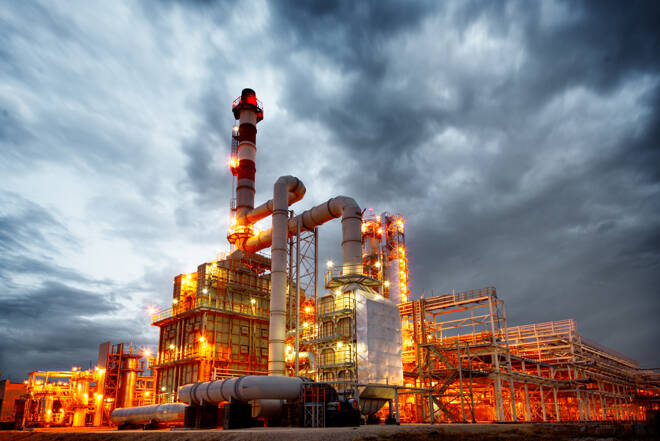Advertisement
Advertisement
Gas and Coal Surge Spreads to Oil with Substitution in Focus
By:
The global energy market remains on fire, with surging gas and coal prices now increasingly impacting crude oil as well, with consumers looking for alternative fuels to substitute punitively high and increasingly growth impairing prices for gas and coal across the world. Under normal circumstances, a surge of this magnitude would trigger increased CAPEX spend by producers looking to benefit, but the green transformation drive has potentially reduced this reaction function, leaving consumers exposed until prices reach levels that forces demand destruction.
The global energy market remains on fire, with surging gas and coal prices now increasingly impacting crude oil as well, with consumers looking for alternative fuels to substitute punitively high and increasingly growth impairing prices for gas across the world.
The rally which started in Europe several months ago has during the past months been spreading like a wildfire to the rest of the world. The combination of gas in short supply, and lower-than-expected power generation from solar and wind has forced utilities to buy coal in order to maintain the required baseload across the electrical grid.
In energy management the term baseload, is the permanent minimum load that a power system is required to produce in order to meet fundamental electricity demands by customers. In the past that baseload was provided by conventional power plants such as coal and nuclear plants, but with the green energy transformation in Europe, many of these conventional power plants has been shut down and replaced with renewable energy production, and with gas being the go-to fuel when production from renewables drop.
To put the current elevated prices in Europe into perspective, the price of Dutch TTF first month gas has risen to near €85/MWh or $29/MMBtu or more than five times higher than the average seen during the previous five years. German power prices for 2022 delivery have risen to €120/MWh and more than 3X the five-year average.
Tight supply of gas has forced power generators to turn to coal, thereby not only driving the price of coal delivered at Rotterdam to a multi-year high at $155/tons (2X the average) but also increasing the price for emission allowances under the European Union’s Emissions Trading System to €65/tons (4X the average).
Low stockpiles of most fuels, and limited time left to replenish stocks before the peak demand season, has left consumers around the world increasingly exposed to a supply crunch should we end up with a colder than normal winter. With gas and coal trading at very elevated levels we are now seeing the next stage of this energy crunch with crude oil prices rising as well. Brent crude oil trades above $80 for the first time in three years on the rising prospect for increased substitution demand for oil powered generation.
That additional increase in demand for crude oil and fuel products occurring at a time when global stock levels of crude oil are falling amid a continued post-pandemic recovery in demand and after hurricane Ida supply disruptions more than offset the ramp-up in OPEC+ production since July.
The latest market to surge higher is US traded natural gas prices which during the past four days has surged by 30% to a seven-year high at $6.25/MMBtu. The global supply crunch will drive increased demand for US LNG exports, thereby also raising concerns about tightening inventory levels in the US. The March-April 2022 spread, also called the Widowmaker given its unpredictable and volatile behavior has surged to $1.54, the highest for this time of year since 2005. The spread reflects the market view on how tight supply will be at the end of winter, before spring arrives and injections into storage resumes.
In conclusion, the old saying that the best cure for a high price is a high price may not work this time round. The focus on ESG and green transformation has reduced producers’ normal long-cycle capex response to surging prices and rising demand. Without a response from producers, the only other option is for prices to reach levels that triggers demand destruction. A development that may come at a heavy price given the risk to global growth, inflation and stock price valuations.
The best we can hope for is a milder than expected winter lowering demand. If, however, prices continue higher, the much-needed green transformation push could suffer a temporary setback with worries about blackouts exceeding worries about climate change.
This article is provided by Saxo Capital Markets (Australia) Pty. Ltd, part of Saxo Bank Group through RSS feeds on FX Empire
About the Author
Ole Hansencontributor
Ole Hansen joined Saxo Bank in 2008 and has been Head of Commodity Strategy since 2010.
Advertisement
